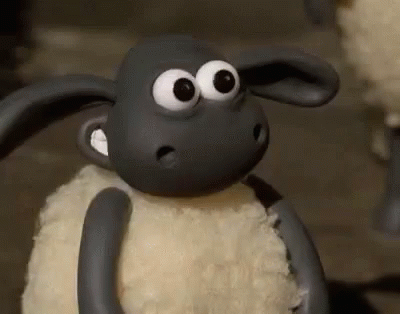
Growing Fluency Lesson
Fluency on the Farm
By: Miss Sara Mann

Rationale: The goal of this lesson is to help students become fluent readers. Fluency is reading quickly at an even pace while using expression. In order to become fluent, a reader must increase their sight word vocabulary. Fluency is essential for students to become great, competent readers. It makes reading more efficient and will lead to increased comprehension of texts. During this lesson, students will increase their fluency skills by rereading a text, increasing sight word vocabulary, and participating in peer reviews.
Materials:
Chart with sentence: The lamb lives on a farm.
Baa-Choo! read aloud video (link below)
Copy Baa-Choo! (one for each set of partners)
Pencils
Stopwatches (one for each set of partners)
Fluency Chart/Checklist (one for each child, attached below)
Fluency Tracker (one for each child, attached below)
Procedure:
1. Say: “Today class we are going to practice becoming fluent readers. Does anyone know what that means?” (wait for response) “To be fluent in reading means to be able to read quickly, but also correctly. When we become fluent readers, we are able to automatically recognize words and understand the story much more easily. To become fluent readers we need to practice, so that’s what we are going to do right now!”
2. Say: “Let’s look at this sentence on the board. (The lamb lives on a farm.) I am going to read the sentence and I want all of you to tell me if you think I sound like a fluent reader. Remember that fluent readers read words quickly, smoothly, and correctly. Okay, the l,/a/-/a/, m-m, b, lamb l,/i/-/i/,v, /e/,s lives on a f,/a/-/a/,r, m, The lamb lives on a farm. Did you notice that when I got stuck on the word farm I reread the sentence to figure out what word would make sense there? That strategy is called crosschecking and it can be super helpful when learning to become fluent readers.”
3. Say: “So who thinks that I sounded like a fluent reader when reading that sentence, raise your hand.” (wait for response) “Right, I did not read like a fluent reader. I read the sentence slowly and struggled with decoding the words. A fluent reader would automatically say ‘The lamb lives on a farm’ and it would be easy to understand.”
4. Say: “Now that we have talked about the difference between a non-fluent reader and a fluent reader, we are going to practice ourselves. We are going to read the book Baa-Choo!. I am going to put you in groups of two and I will give each group a book.” (assign partners and pass out books) “First we are going to do a read along with a video of the book. I want you and your partner to follow along with the books I gave you. The book is about a lamb named Sam who has a cold. Sam cannot stop sneezing, but his sneezes sound silly. Sam’s sneezes don’t have an ending. He asks his farm animal friends for help. Let’s read along to see if Sam can find the ending to his sneezes.” (play video)
5. Say: “Wow, wasn’t that such a good and silly story! Now that we are familiar with the story, you and your partner are going to time each other reading it.” (pass out stopwatches and demonstrate how to use) “Decide who is going to be Reader 1 and who is going to be Reader 2. Reader 1 will read the book first while Reader 2 times them, when you are finished reading and timing Reader 2 should fill out the evaluation sheet about their partner’s reading.” (pass out fluency charts and explain) “Then it is Reader 2’s turn to read while Reader 1 times. We are gong to do this so each person reads 3 times and I want you to try to be more fluent each time, but remember it is not a race!”
6. Say: “If you have any questions, raise your hand and I will come help you. It is okay if you are not fluent yet, that is why we are practicing! Be encouraging to your partner, time how long it takes them to read, and pay attention to the following things: Does the reader read faster than their last time reading? Does the reader read smoother than their last time reading? Does the reader read with expression? Does the reader read more words correctly than their last time reading? Ok, now let’s start reading!” Walk around the room to observe student’s progress as they read.
7. When every student has read 3 times and completed the fluency charts and checklist, begin asking the comprehension questions. Say: “Now let’s talk a little about the story. Why did Sam need help?” (wait for response) Yes, he needed help to finish his sneeze and who did Sam ask to help him?” (wait for response) “Yes, that’s right. Sam asked the rooster, the pig, and the goats all to help him. How was Sam finally able to finish his sneeze?” (wait for response) “Good job. They all worked together to make him sneeze a great big sneeze.”
8. Collect Fluency Charts from students. Assess fluency by using the formula: (words x 60)/seconds. Graph each student’s speed on the Fluency Tracker so they can see their improvement as they progress.
Video: https://www.youtube.com/watch?v=yyysoOe_L5A
Fluency Chart/Checklist:
Fluency Tracker:
Book:
Weeks, Sarah. Baa-Choo!. Manning, Jane, illus. Scholastic Inc. c 2004.
References:
Endacott, Gabrielle. Flying Fluently Into Charlotte’s Web. https://gabrielleendacott.wixsite.com/readinglessons/growing-independence-and-fluency
Kantor, Haley. Speedy Reading Like a Cheetah! https://hkantor2.wixsite.com/readinglessons/growing-independence-and-fluency
Parker, Mary-Cathryn. Cruising Into Fluency With Cars. https://mjp0036.wixsite.com/msparkerslessons/growing-independence-and-fluency

